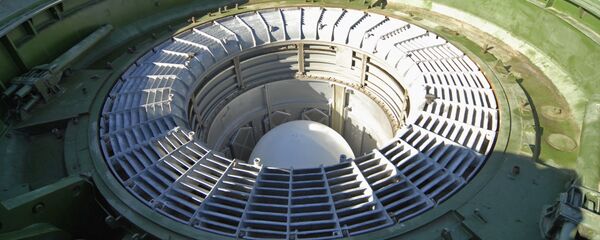Strategic goals
The top managers of the defense-industrial complex have been tasked with meeting all the state armament orders without jacking up the price, in exchange for long-term state orders. They will also have to increase their share of civilian output from 16 percent now to 50 percent in 2030.
Nuclear forces a top priority
The ongoing modernization of the Russian Armed Forces comes amid government plans to slash defense outlays from the current 4.3 percent of GDP to 3 percent in the coming years.
Just like before, the Strategic Nuclear Forces (SNF) top the list of the Defense Ministry’s priorities. By 2027 all SNF divisions and regiments will have been armed with fifth-generation Yars mobile missile complexes and Sarmat silo-based ICBMs.
The pace of the modernization of the country’s Strategic Missile Forces (SMF) will depend on progress in hypersonic technology. The Sarmat ICBMs are to carry Yu-71 high-precision hypersonic warheads.
On April 20, Deputy Prime Minister Dmitry Rogozin said that Russia and the US were now moving neck and neck in the development of hypersonic weapons.
Air shield
In aviation, Russia prioritizes the production of Tu-160M2 strategic bombers (a modernized version of the Soviet-era Tu-160 bomber), the development of the fifth-generation PAK FA fighter and the PAK DA long-range bomber.
The S-500 missile system, capable of shooting down ICBMs and, possibly, low-flying space satellites too, will simultaneously ensure anti-missile and anti-aircraft duties.
The S-500 system has an effective range of 600 kilometers (370 miles). Foreign experts say that the orbits of some of the US navigation and spy satellites are between 300 kilometers (186 miles) and 1,000 kilometers (620 miles).
The Unified Space System is another technological breakthrough that will ensure almost 100-percent protection of Russia’s airspace.
By 2020 it will be the backbone of the country’s space-based missile warning network alerting the Defense Ministry about any missile launches made anywhere in the world.
Rakushkas instead of Armatas
Looking on the bright side, the Ground Forces have been receiving the BMD-4M and Rakushka armored vehicles for almost a year now, and over 300 new units are expected to enter service before 2020.
In addition, the Defense Ministry plans to buy 50,000 Ratnik “future soldier” combat outfits for its ground, paratroop and Marine forces. Within the next three years almost every Russian Ground Forces serviceman will equipped with the state-of-the-art infantry combat system.
Never miss a story again — sign up to our Telegram channel and we'll keep you up to speed!





